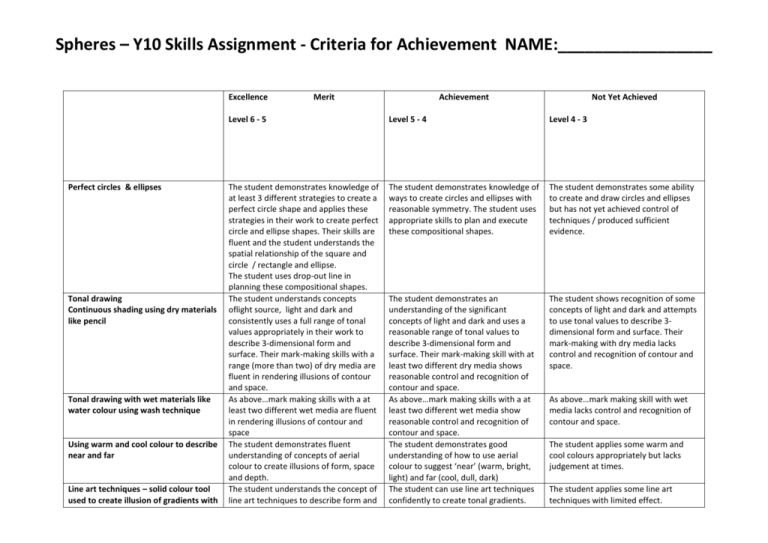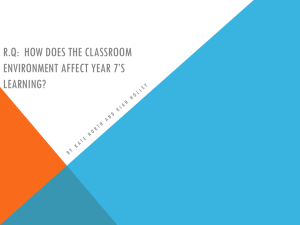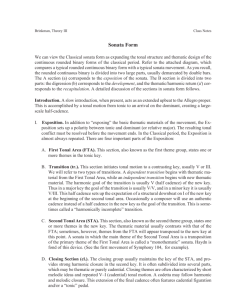Spheres assessment rubric
advertisement

Spheres – Y10 Skills Assignment - Criteria for Achievement NAME:_________________ Excellence Perfect circles & ellipses Tonal drawing Continuous shading using dry materials like pencil Tonal drawing with wet materials like water colour using wash technique Using warm and cool colour to describe near and far Line art techniques – solid colour tool used to create illusion of gradients with Merit Achievement Not Yet Achieved Level 6 - 5 Level 5 - 4 Level 4 - 3 The student demonstrates knowledge of at least 3 different strategies to create a perfect circle shape and applies these strategies in their work to create perfect circle and ellipse shapes. Their skills are fluent and the student understands the spatial relationship of the square and circle / rectangle and ellipse. The student uses drop-out line in planning these compositional shapes. The student understands concepts oflight source, light and dark and consistently uses a full range of tonal values appropriately in their work to describe 3-dimensional form and surface. Their mark-making skills with a range (more than two) of dry media are fluent in rendering illusions of contour and space. As above…mark making skills with a at least two different wet media are fluent in rendering illusions of contour and space The student demonstrates fluent understanding of concepts of aerial colour to create illusions of form, space and depth. The student understands the concept of line art techniques to describe form and The student demonstrates knowledge of ways to create circles and ellipses with reasonable symmetry. The student uses appropriate skills to plan and execute these compositional shapes. The student demonstrates some ability to create and draw circles and ellipses but has not yet achieved control of techniques / produced sufficient evidence. The student demonstrates an understanding of the significant concepts of light and dark and uses a reasonable range of tonal values to describe 3-dimensional form and surface. Their mark-making skill with at least two different dry media shows reasonable control and recognition of contour and space. As above…mark making skills with a at least two different wet media show reasonable control and recognition of contour and space. The student demonstrates good understanding of how to use aerial colour to suggest ‘near’ (warm, bright, light) and far (cool, dull, dark) The student can use line art techniques confidently to create tonal gradients. The student shows recognition of some concepts of light and dark and attempts to use tonal values to describe 3dimensional form and surface. Their mark-making with dry media lacks control and recognition of contour and space. As above…mark making skill with wet media lacks control and recognition of contour and space. The student applies some warm and cool colours appropriately but lacks judgement at times. The student applies some line art techniques with limited effect. hatching, stippling, scribbling technique Layering techniques with mixed media Cutting skills – cutting along edges neatly Gluing – collage techniques – sticking things down flat with neat edges Finished Drawing 1 – greyscale mixed media (charcoal, pencil, ink, acrylic) Finished Drawing 2 – colour Painting (acrylic) Extension Relief Sculpture Drawings – based on the Art Practice of Rohan Whealeans (NZ) JOURNAL (workbook) Date: Comment Final Grade: surface and can create continuous gradients in a variety of techniques with fluent skills. The student can skillfully control the viscosity of wet media and combine effectively with dry media in thin layers using appropriate processes and procedures with understanding. The student consistently uses scissor techniques effectively to create shapes with perfect edges . The student consistently uses collage techniques effectively to glue shapes with perfect edges . The student can skillfully control and accurately interpret tonal values from a photograph of appropriate subject matter using full tonal range and a variety of black and white media with understanding of layering The student can skillfully compose form and space and accurately interpret colour values from an appropriate photograph using full tonal range in acrylic medium with understanding and fluent control of layering techniques. The student uses materials, forms, colour and techniques fluently and effectively in experimental and interpretive work with understanding. Evidence of all work for this unit including experiments, notes and photos is neatly and effectively presented in the student’s personal journal of learning (workbook) The student can control thin layers of wet media and dry media using appropriate processes and procedures. The student can use layers of wet media and dry media with limited effect. The student can use scissor techniques with sufficient control The student uses scissor techniques with limited effect. The student can use collage techniques with sufficient control The student uses collage techniques with limited effect. The student shows control and reasonable accuracy of tonal values interpreted from a photograph of appropriate subject matter using full tonal range and some understanding of layering. The student shows reasonable composition of form and space and some accuracy in their interpretation of colour values from an appropriate photograph using good tonal range and some understanding and control of layering techniques. The student uses materials, forms, colour and techniques with some understanding in experimental and interpretive work. Evidence of most of the work for this unit is neatly presented in the student’s journal of learning (workbook) The student shows limited control of tonal values and interpretation of the photograph. The student shows limited control of form and space, layering techniques and interpretation of colour values. The student shows limited control of materials, forms, colour and techniques in experimental and interpretive work. Evidence of some work is presented in the student’s personal journal of learning (workbook).







